Movie quote of the day:
“The visions are clear now. I see possible futures, all at once. Our enemies are all around us, and in so many futures they prevail. But I do see a way, there is a narrow way through.”
— Paul Atreides, “Dune: Part Two” (2024)

It’s time to fill out brackets because March Madness is here. I won’t lie, I haven’t paid much attention to the college basketball regular season. That means that I’m either going to do horribly or get almost every pick correct. I’ve been cramming in research the last 40(ish) hours since the bracket was revealed Sunday. I now wish that my West Virginia Mountaineers had given me a reason to care about this college basketball season.
Two years ago was the worst I’ve ever done when it comes to predicting the NCAA Tournament. I lost two Final Four teams, including my national champion, on the first day of the tournament. I was a little better last year, but still wasn’t great thanks to Arizona and Purdue letting me down on, you guessed it, the first day of the tournament. I feel like my reputation is on the line this year, so I really need a good showing. That’s why I relied pretty heavily on KenPom rankings.
We saw so many upsets in the conference tournaments last week, which is why this was one of the craziest “on the bubble” debates in years. It certainly feels like we’re in for another very unpredictable NCAA tournament. However, the last two tournaments were two of the craziest that I’ve witnessed in my life. I also think we’re due for a tournament where we see mostly chalk.
As always, March Madness is a welcome sight at this point in the sports calendar. I need something to take my attention away from NFL free agency news, which is pretty dry right now. Keep your head on a swivel these next three weeks. I can already feel my bracket being busted.
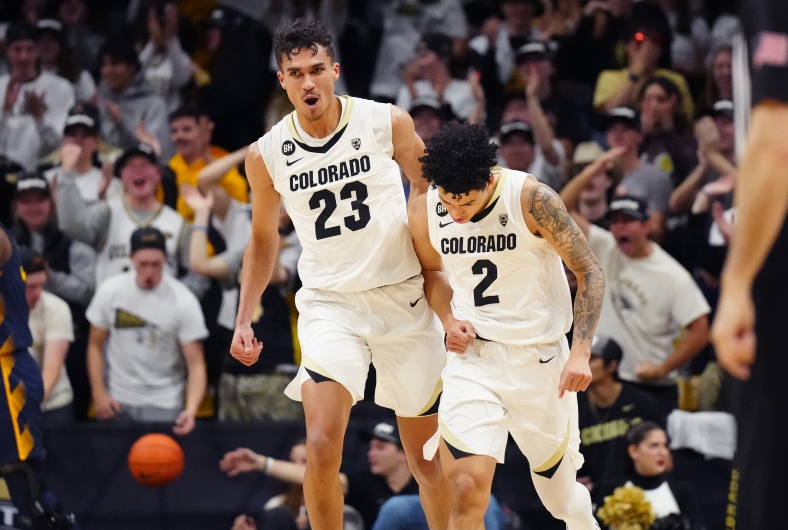
First Four — Dayton, Ohio
No. 16 Wagner (16-15) vs. No. 16 Howard (18-16)
I’ll give the advantage to Howard in this matchup. The Bison not only rank higher in KenPom rankings, but they’ve won nine of their last 11 games. They also have tournament experience after making an appearance last year. I doubt Wagner, which averages just 63.5 points per game, is good enough offensively to win in the tournament.
Winner: Howard
No. 10 Colorado State (24-10) vs. No. 10 Virginia (23-10)
Mountain West teams haven’t performed well in the tournament for the last decade — posting a record of 12-26 since 2013. However, I think Colorado State is an underseeded team. The Rams rank 31 spots higher than Virginia in KenPom rankings. That’s quite a disparity. The Cavaliers also lost five of their last nine games to end the regular season.
Winner: Colorado State
No. 16 Grambling State (20-14) vs. No. 16 Montana State (17-17)
There’s quite a disparity between these teams when it comes to KenPom rankings. Montana State ranks No. 213, whereas Grambling State ranks No. 267. I’ll give the advantage to to the Bobcats. I’m not convinced that the Tigers are good enough offensively — averaging just 67.6 points per game — to score on Montana State’s defense.
Winner: Montana State
No. 10 Colorado (24-10) vs. No. 10 Boise State (22-10)
Colorado is another team that I think is underseeded. The Buffaloes rank in the top 30 in the country, according to KenPom (Boise State ranks No. 39). They also ended the season on a positive note — winning eight of their last nine games. The Broncos have never won a tournament game in program history and I doubt that changes this year.
Winner: Colorado
Round of 64
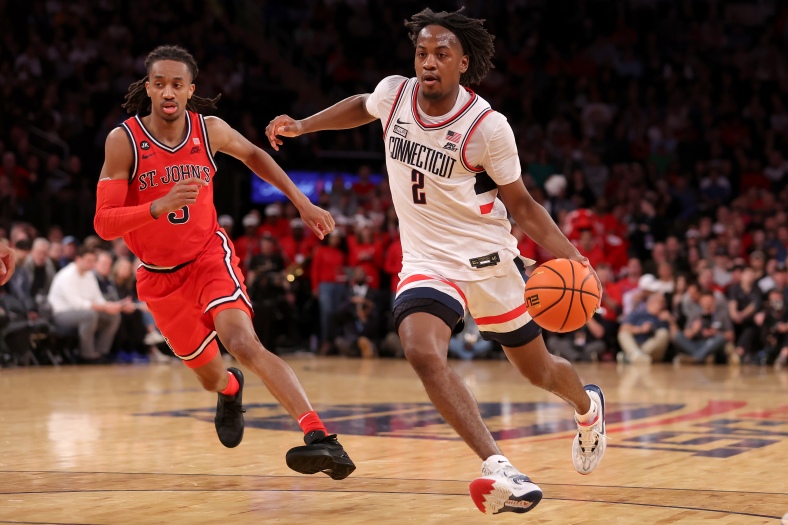
East Regional
No. 16 Stetson (22-12) vs. No. 1 UConn (31-3) — Brooklyn, N.Y.
I have a difficult time seeing UConn getting bounced early in this tournament. The Huskies have too much depth and have been the most consistent team in the country all season. No. 16 seeds have been more competitive against No. 1 seeds in recent years, but I don’t see an upset happening in this matchup. UConn should cruise to the next round.
Winner: UConn
No. 9 Northwestern (21-11) vs. No. 8 Florida Atlantic (25-8) — Brooklyn, N.Y.
Florida Atlantic hasn’t been as consistent this season as last season. The Owls are still a very good team, though. They rank in the top 45 in KenPom, and rank in the top 20 in adjusted offensive efficiency. Northwestern will have a very difficult time defensively in this matchup. I also think Florida Atlantic has the coaching advantage in Dusty May.
Winner: Florida Atlantic
No. 12 UAB (22-11) vs. No. 5 San Diego State (24-10) — Spokane, Wash.
We didn’t get a single No. 12 seed to upset a No. 5 seed last year. In the last 20 years, history says to expect at least two upsets the year after that happens. I’m not convinced there will be an upset in this matchup, though. San Diego State is an elite defensive team and UAB isn’t a great offensive team. I think the Blazers will have a difficult time scoring on the Aztecs.
Winner: San Diego State
No. 13 Yale (22-9) vs. No. 4 Auburn (27-7) — Spokane, Wash.
Ivy League schools are always tricky teams in the tournament. This won’t be an easy game for Auburn. I’m still picking the Tigers to win, though. They rank No. 4 in the country in KenPom rankings, so they might be the most underseeded team in this tournament field. Yale isn’t a terrific defensive team, which should bode well for Auburn, which averages 83.2 points per game.
Winner: Auburn
No. 11 Duquesne (24-11) vs. No. 6 BYU (23-10) — Omaha, Neb.
Duquesne is a hot team right now, but I doubt it’s good enough to pull off the upset in this matchup. BYU ranks No. 16 in the country, according to KenPom, so it’s a very underseeded team. The Cougars are also one of the top offensive teams in the country — ranking No. 11 in adjusted offensive efficiency. I doubt the Dukes will be able to keep up on the scoreboard.
Winner: BYU
No. 14 Morehead State (26-8) vs. No. 3 Illinois (26-8) — Omaha, Neb.
The Big Ten tournament champion hasn’t made it past the first weekend of the NCAA tournament since 2019. I wouldn’t be so quick to pick Illinois to win this game given that track record. I’ll still pick the Fighting Illini to win, though. They’ve been playing well since late January — winning 12 of their last 15 games, including seven of their last eight.
Winner: Illinois
No. 10 Drake (28-6) vs. No. 7 Washington State (24-9) — Omaha, Neb.
The line of this game has shifted quite a bit in favor of Drake since it opened. I think that’s pretty telling to take the Bulldogs seriously in this matchup. Drake will likely have the best player in this game in Tucker DeVries, who averages 21.8 points per game. I think Washington State’s defense will have its hands full with him. The Bulldogs also have more tournament experience.
Winner: Drake
No. 15 South Dakota State (22-12) vs. No. 2 Iowa State (27-7) — Omaha, Neb.
I can’t bring myself to pick against Iowa State in this matchup. The Cyclones are red hot right now after winning 11 of their last 13 games, including winning three Big 12 tournament games by a combined 61 points. This is one of the weaker South Dakota State teams in the last 15 years. I also expect this to essentially be a home game for Iowa State.
Winner: Iowa State
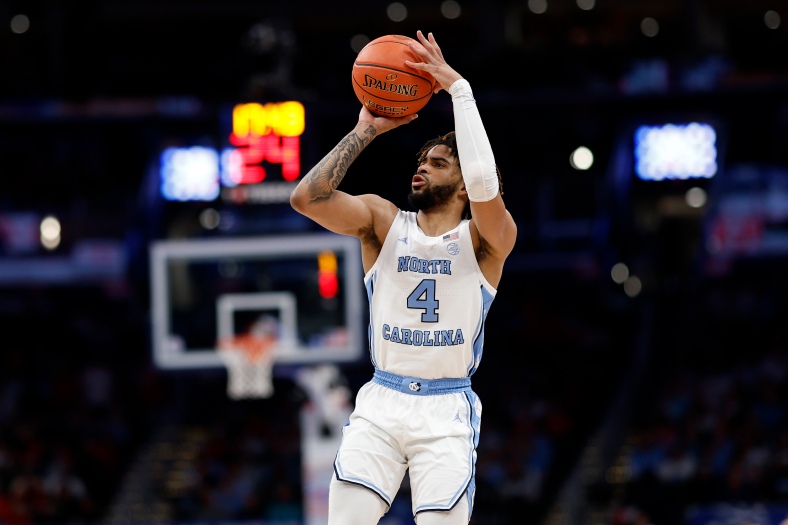
West Regional
No. 16 Howard vs. No. 1 North Carolina (27-7) — Charlotte, N.C.
North Carolina has played like one of the top teams in the country the last few weeks, even though it might be overseeded a bit. The Tar Heels have won 20 of their last 24 games. If not for an NC State team getting hot at the right time, North Carolina probably would’ve won the ACC tournament. I highly doubt Howard is good enough to pull off a historic upset.
Winner: North Carolina
No. 9 Michigan State (19-14) vs. No. 8 Mississippi State (21-13) — Charlotte, N.C.
Mississippi State is playing well right now, but I’ll give the advantage to Michigan State in this matchup. Tom Izzo has been one-and-done just six times in his previous 25 tournament appearances. I also think the Bulldogs will have a difficult time scoring on the Spartans’ defense, which ranks in the top 10 in adjusted defensive efficiency.
Winner: Michigan State
No. 12 Grand Canyon (29-4) vs. No. 5 Saint Mary’s (26-7) — Spokane, Wash.
I think this is the mostly likely 5/12 matchup to end in an upset. Grand Canyon is the highest ranking No. 12 seed in KenPom (No. 53). The Antelopes have lost only four games all season and they have a head coach with plenty of tournament experience in Bryce Drew. Saint Mary’s is one of those teams that I never trust in the tournament and I won’t start now.
Winner: Grand Canyon
No. 13 Charleston (27-7) vs. No. 4 Alabama (21-11) — Spokane, Wash.
Alabama didn’t end the regular season on a positive note — losing four of its last six games. I wouldn’t rule out a potential upset in this matchup, but I don’t see it happening. Charleston is one of the worst defensive teams in this tournament field. You have to be a great defensive team in order to knock off the Crimson Tide, who average 90.8 points per game.
Winner: Alabama
No. 11 New Mexico (26-9) vs. No. 6 Clemson (21-11) — Memphis, Tenn.
I’ve mostly picked against Mountain West schools so far, but I’ll take the upset here. Clemson isn’t playing well right now. The Tigers have lost four of their last eight games, including two losses to very bad Notre Dame and Boston College teams. New Mexico is surging after winning its conference tournament last week. Vegas also favors the Lobos in this matchup.
Winner: New Mexico
No. 14 Colgate (25-9) vs. No. 3 Baylor (23-10) — Memphis, Tenn.
Even though Colgate will be making its fourth-consecutive tournament appearance, I don’t take it that seriously. The Raiders have been outscored by a combined 44 points during that stretch. Baylor is one of the top offensive teams in this tournament — ranking in the top 10 in adjusted offensive efficiency. I doubt Colgate will be able to keep up on the scoreboard.
Winner: Baylor
No. 10 Nevada (26-7) vs. No. 7 Dayton (24-7) — Salt Lake City
I feel an upset brewing in this matchup. Dayton has to make a long trip west despite being the higher seed, which benefits Nevada. The Wolf Pack played well down the stretch — winning 11 of their last 14 games. I think the Flyers have been too inconsistent defensively all season. Nevada also ranks in the top 40 in the country in both adjusted offensive and defensive efficiency.
Winner: Nevada
No. 15 Long Beach State (21-14) vs. No. 2 Arizona (25-8) — Salt Lake City
I have a difficult time seeing Arizona getting bounced early in back-to-back seasons. The Wildcats shoot the ball very well and rank in the top 20 in the country in offensive rebounds. That ought to bode well in the tournament. Long Beach State is one of the worst defensive teams in this tournament field. I think the Beach will have a difficult time slowing down Arizona’s offense.
Winner: Arizona
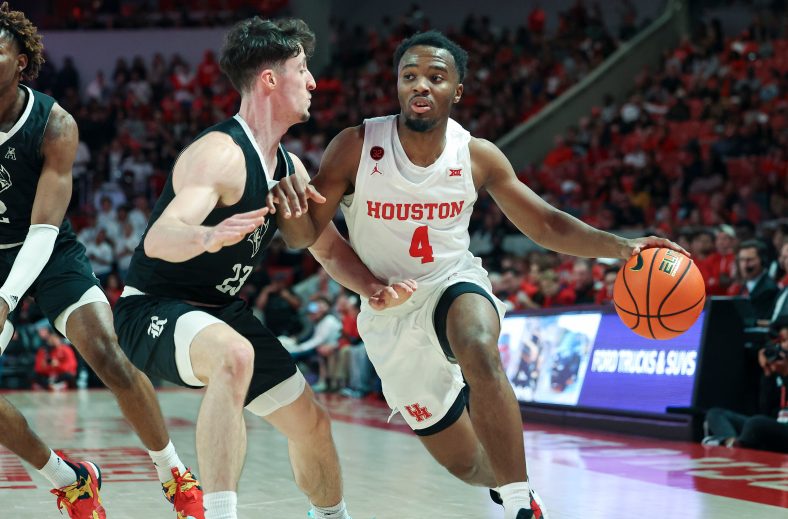
South Regional
No. 16 Longwood (21-13) vs. No. 1 Houston (30-4) — Memphis, Tenn.
I fully expect Houston to bounce back after getting blown out in the Big 12 championship. The Cougars are one of the more talented teams in this tournament and are excellent defensively. This is a very bad matchup for Longwood, which ranks near the bottom among tournament teams offensively. Houston shouldn’t have too many issues in this matchup.
Winner: Houston
No. 9 Texas A&M (20-14) vs. No. 8 Nebraska (23-10) — Memphis, Tenn.
I think this is a terrible matchup for Nebraska. The Cornhuskers rank in the bottom third in the country in offensive rebounds and total rebounds allowed per game. Texas A&M doesn’t shoot the ball that well, but getting second-chance opportunities will only improve its chances of winning. The Aggies are also playing well after winning five of their last six games.
Winner: Texas A&M
No. 12 James Madison (31-3) vs. No. 5 Wisconsin (22-13) — Brooklyn, N.Y.
James Madison poses a lot of problems for Wisconsin. The Dukes rank in the top five in defending 3-pointers. They’ve also won 13 straight games. I’m still picking the Badgers to win, though. They shoot the ball well and take care of the basketball. The difference in the game will likely be which team collects more offensive rebounds, and I give that advantage to Wisconsin.
Winner: Wisconsin
No. 13 Vermont (28-6) vs. No. 4 Duke (24-8) — Brooklyn, N.Y.
I’m to the point that I need to see Vermont pull off an upset in the tournament before I pick it to do so. The Catamounts have never advanced past the Round of 64 under head coach John Becker. That’s why I’ll take Duke to win this game. The Blue Devils will have a significant talent advantage, which will likely be the difference in this matchup.
Winner: Duke
No. 11 NC State (22-14) vs. No. 6 Texas Tech (23-10) — Pittsburgh
I think NC State will be gassed after winning five games in five days in the ACC tournament. The Wolfpack now have a quick turnaround and play on Thursday. I think that bodes well for Texas Tech, which KenPom considers to be a top 25 team in the country. The Red Raiders have been the far more consistent team all season. I like them to advance to the next round.
Winner: Texas Tech
No. 14 Oakland (23-11) vs. No. 3 Kentucky (23-9) — Pittsburgh
Kentucky has been very inconsistent defensively, but I still expect it to win this game. Oakland isn’t a very good offensive team — ranking in the bottom 15 among tournament teams in adjusted offensive efficiency. I highly doubt that’ll be good enough to knock off the Wildcats. I expect Kentucky to advance to the Round of 32.
Winner: Kentucky
No. 10 Colorado vs. No. 7 Florida (24-11) — Indianapolis
This is a dangerous matchup for Florida. The Gators aren’t a great defensive team and will be shorthanded, and Colorado is a good offensive team. This will likely be a very high-scoring game, but I’ll still give the advantage to Florida. The Gators are elite offensively — ranking in the top 15 in the country in adjusted offensive efficiency, points per game, and offensive rebounding.
Winner: Florida
No. 15 Western Kentucky (22-11) vs. No. 2 Marquette (25-9) — Indianapolis
I think this is a very bad matchup for Western Kentucky, which struggles on the offensive end of the court. Marquette is one of the better defensive teams in this tournament — ranking in the top 20 in the country in adjusted defensive efficiency. Points will be hard to come by for the Hilltoppers, which will make it incredibly difficult to pull off the upset.
Winner: Marquette
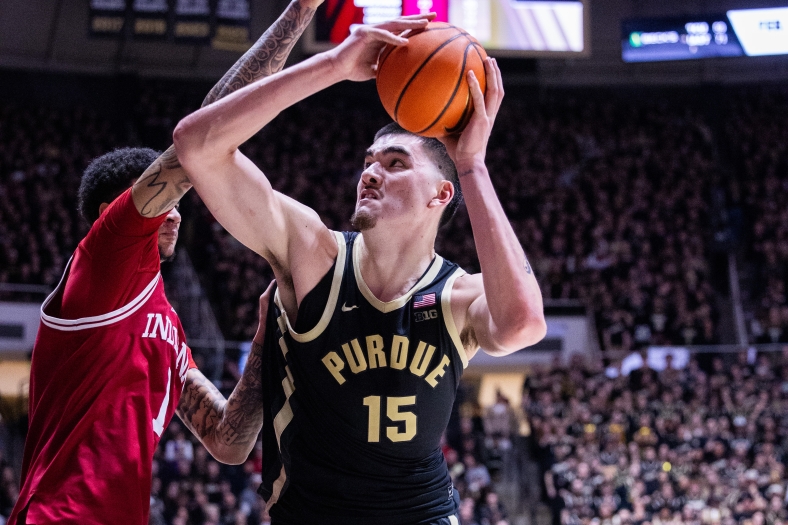
Midwest Regional
No. 16 Montana State vs. No. 1 Purdue (29-4) — Indianapolis
I highly doubt Purdue will overlook its opponent this year. I fully expect last year’s loss to No. 16-seeded Fairleigh Dickinson to be in the back of its mind. The Boilermakers might have the best player in the tournament in Zach Edey, who averages 24.4 points per game. Like Arizona, I don’t think Purdue will be bounced early in back-to-back seasons.
Winner: Purdue
No. 9 TCU (21-12) vs. No. 8 Utah State (27-6) — Indianapolis
Given the Mountain West’s recent history in the tournament, there’s no way I’m picking against TCU. The Horned Frogs rank 15 spots ahead of Utah State in KenPom rankings, and in the top 50 in the country in adjusted offensive efficiency, adjusted defensive efficiency, and offensive rebounds. This feels like a very bad matchup for the Aggies.
Winner: TCU
No. 12 McNeese State (30-3) vs. No. 5 Gonzaga (25-7) — Salt Lake City
McNeese State will be a trendy pick because it’s one of the most improved teams in the country from last year, and this isn’t a great Gonzaga team. However, I’m not picking against Mark Few. He hasn’t been eliminated in the Round of 64 since 2008. KenPom also considers Gonzaga to be a top 15 team in the country, so it feels like a very underseeded team.
Winner: Gonzaga
No. 13 Samford (29-5) vs. No. 4 Kansas (22-10) — Salt Lake City
I actually came close to picking the upset in this game. Kansas was hobbling at the end of the regular season — losing six of its last 10 games, including back-to-back losses by a combined 50 points. The Jayhawks have also sustained injuries to some of their better players. I still think Kansas has what it takes to beat Samford, which struggles on the defensive end of the court.
Winner: Kansas
No. 11 Oregon (23-11) vs. No. 6 South Carolina (26-7) — Pittsburgh
I’m not doubting Dana Altman in the tournament. He’s never lost in the Round of 64 as Oregon’s head coach. Altman has even made it past the first weekend five times in the last seven tournament appearances with the Ducks. South Carolina has been a good story to get to this point. I just think the Gamecocks are catching Oregon at the wrong time.
Winner: Oregon
No. 14 Akron (24-10) vs. No. 3 Creighton (23-9) — Pittsburgh
Akron managed to win the MAC tournament, but I’m not convinced it’s good enough to pull off the upset in this matchup. The Zips have been too inconsistent on both ends of the court all season. Creighton is an excellent offensive team — averaging 80.5 points per game. I have more trust in the Bluejays, who haven’t lost in the Round of 64 since 2018.
Winner: Creighton
No. 10 Colorado State vs. No. 7 Texas (20-12) — Charlotte, N.C.
I think Texas is a better team than what its record would indicate. The Longhorns had bad luck in Big 12 play (losing six games by fewer than 10 points). They should benefit by getting out of conference play. Texas will also have a significant talent advantage in this matchup. Colorado State struggles to defend 3-pointers and the Longhorns rank in the top 60 in 3-point shooting.
Winner: Texas
No. 15 Saint Peter’s (19-13) vs. No. 2 Tennessee (24-8) — Charlotte, N.C.
Don’t be so quick to rule out Saint Peter’s. The Peacocks have caught fire the last few weeks — winning eight of their last 10 games. I expect Tennessee to win this game comfortably, though. The Volunteers are one of the best defensive teams in this tournament. I think Saint Peter’s will have a difficult time scoring enough points to pull off the upset.
Winner: Tennessee
Round of 32
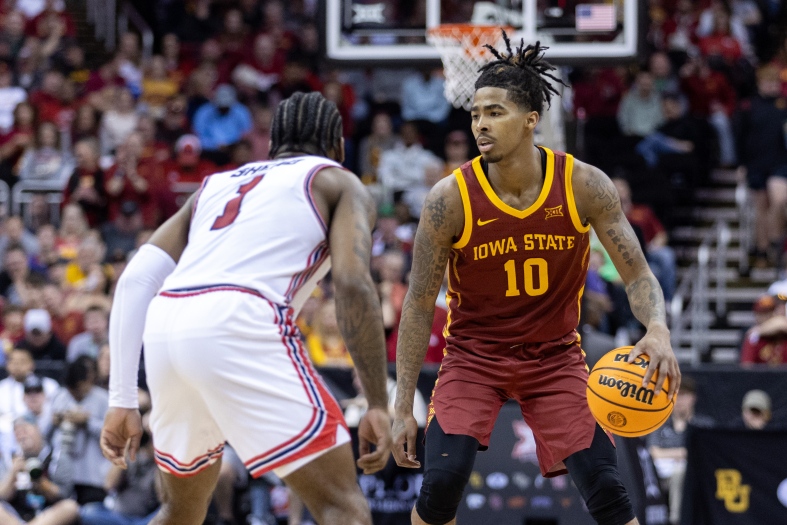
East Regional
No. 8 Florida Atlantic vs. No. 1 UConn — Brooklyn, N.Y.
Florida Atlantic’s defense is the main reason why I doubt it can make another deep run like last year. The Owls rank No. 109 in adjusted defensive efficiency. They also allow 10.8 offensive rebounds per game, which puts them in the bottom half of the country. This feels like a mismatch in favor of UConn. The Huskies have plenty of scoring depth and too much size in the post.
Winner: UConn
No. 5 San Diego State vs. No. 4 Auburn — Spokane, Wash.
I actually think Auburn matches up well against San Diego State’s defense. The Tigers shoot the ball well and do a good job collecting offensive rebounds. They also have scoring depth, with six different players averaging at least 7.1 points per game, and 11 different players to play in at least 28 games. I don’t think the Aztecs have the depth to keep up with Auburn.
Winner: Auburn
No. 6 BYU vs. No. 3 Illinois — Omaha, Neb.
This will likely be a difficult matchup for BYU to pull off the upset. Illinois has a lot of depth, with nine different players appearing in at least 24 games, and one of the best guards in the country in Terrence Shannon Jr. The Fighting Illini can also win in a variety of ways, which is always valuable in the tournament. I also think Brad Underwood is a better coach than Mark Pope.
Winner: Illinois
No. 10 Drake vs. No. 2 Iowa State — Omaha, Neb.
Having DeVries might be good enough to beat Washington State, but I doubt it’ll be enough to upset Iowa State. The Cyclones are arguably the best defensive team in the country — ranking in the top five in adjusted defensive efficiency and points allowed per game. I think the Bulldogs will have a difficult time winning if DeVries has limited scoring chances.
Winner: Iowa State

West Regional
No. 9 Michigan State vs. No. 1 North Carolina — Charlotte, N.C.
I have a ton of respect for Izzo, but this feels like the end of the road for Michigan State. The Spartans have been too inconsistent all season. I don’t think they’re good enough offensively to upset North Carolina, which ranks No. 6 in adjusted defensive efficiency. The Tar Heels are the more talented team, so I expect them to take care of business and advance to the next round.
Winner: North Carolina
No. 12 Grand Canyon vs. No. 4 Alabama — Spokane, Wash.
Grand Canyon might be good enough to upset Saint Mary’s, but I doubt that it can knock off Alabama. The Crimson Tide are one of the best offensive teams in the tournament. The Antelopes aren’t a great defensive team — ranking No. 51 in adjusted defensive efficiency and No. 106 in 3-point defense. I like Alabama to get to the Sweet 16 for a second-consecutive year.
Winner: Alabama
No. 11 New Mexico vs. No. 3 Baylor — Memphis, Tenn.
New Mexico is a good defensive team, but it’ll have a difficult time defending Baylor’s offense. The Bears rank in the top 10 in adjusted offensive efficiency and 3-point shooting. They’re also a very physical team and do a good job of getting offensive rebounds. That’ll likely be a significant disadvantage for the Lobos. New Mexico ranks No. 153 in offensive rebounds allowed per game.
Winner: Baylor
No. 10 Nevada vs. No. 2 Arizona — Salt Lake City
I don’t think Nevada is good enough on the glass to upset Arizona. The Wildcats average 13.2 offensive rebounds per game, and the Wolf Pack rank No. 106 in offensive rebounds allowed per game. I don’t think that matchup bodes well for Nevada because Arizona is an elite offensive team. If the Wildcats get second-chance opportunities, I don’t see how they lose this game.
Winner: Arizona
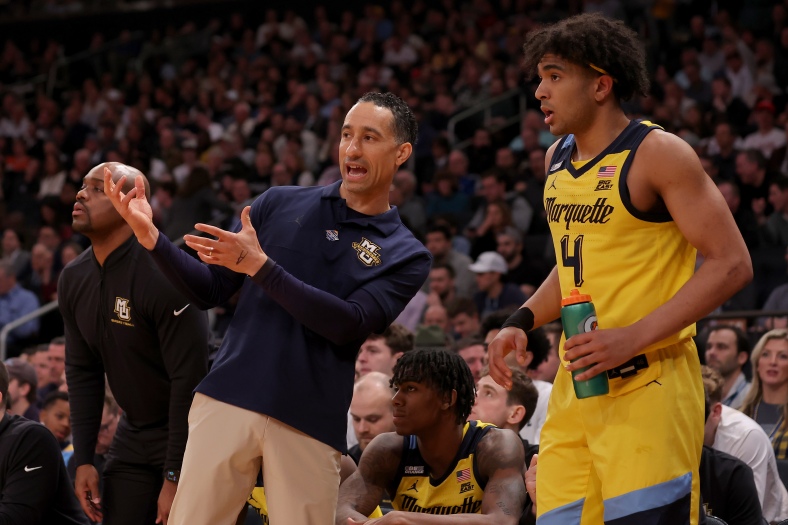
South Regional
No. 9 Texas A&M vs. No. 1 Houston — Memphis, Tenn.
This is a dangerous matchup for Houston. Texas A&M is one of the hottest teams in the country right now. The Aggies also played the Cougars very tough back in December. I think that’ll be in the back of Kelvin Sampson’s mind, though. Houston is an excellent defensive team — allowing just 57 points per game. I think Texas A&M will have a difficult time making shots.
Winner: Houston
No. 5 Wisconsin vs. No. 4 Duke — Brooklyn, N.Y.
I didn’t like the way that Duke ended the regular season. The Blue Devils lost their last two games, including a pretty embarrassing loss to North Carolina on their own home court. This is a much different Wisconsin team than we’ve seen since the Bo Ryan era. The Badgers rank No. 13 in adjusted offensive efficiency and shoot nearly 35% from 3-point territory.
Winner: Wisconsin
No. 6 Texas Tech vs. No. 3 Kentucky — Pittsburgh
Since 2008, only seven teams ranked outside the top 200 in defensive efficiency made it to the Sweet 16. That doesn’t bode well for Kentucky, which allows 79.7 points per game and 12 offensive rebounds per game. I think Texas Tech is good enough defensively to slow down the Wildcats’ offense. I also don’t have much trust in John Calipari, who hasn’t made it past the Round of 32 since 2019.
Winner: Texas Tech
No. 7 Florida vs. No. 2 Marquette — Indianapolis
I actually think this is a favorable matchup for Florida. Marquette ranks in the bottom half of the country in 3-point defense and offensive rebounds allowed per game. The Gators are so good offensively. They’ll make the Golden Eagles pay if given second-chance opportunities. Lastly, I don’t trust Shaka Smart in the tournament. He hasn’t made it past the Round of 32 since 2011.
Winner: Florida
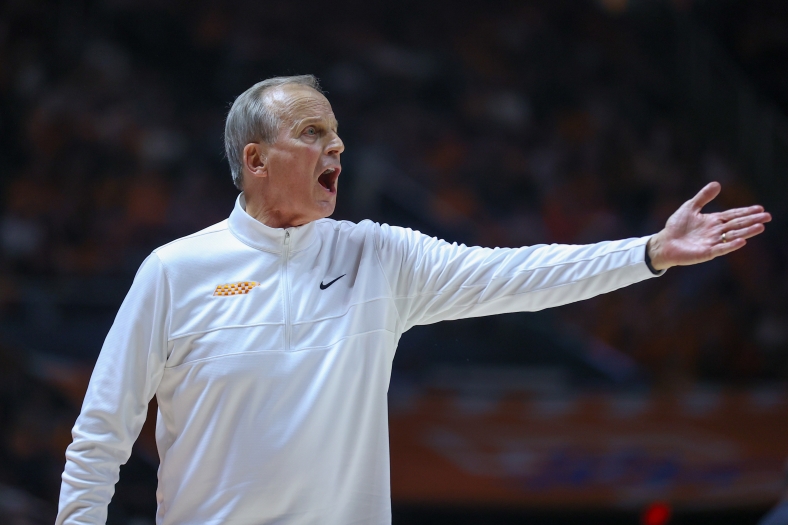
Midwest Regional
No. 9 TCU vs. No. 1 Purdue — Indianapolis
This could be a problematic matchup for Purdue. TCU wants to speed the game up, whereas Purdue wants to slow the game down. Press defense gave the Boilermakers trouble last year, but they’ve done a better job taking care of the ball this year. Purdue is more experienced in the backcourt this year than it was last year, too. I also don’t have much trust in Jamie Dixon in the tournament.
Winner: Purdue
No. 5 Gonzaga vs. No. 4 Kansas — Salt Lake City
If Kansas was healthy, I’d probably pick the Jayhawks to win this game. I don’t know how effective Kevin McCullar Jr. and Hunter Dickinson will be, even though they’re expected to be available. I’ll give the advantage to Gonzaga. Few has made it to the Sweet 16 in eight straight tournament appearances. Him and the Bulldogs are a safe bet in the first two rounds.
Winner: Gonzaga
No. 11 Oregon vs. No. 3 Creighton — Pittsburgh
Creighton should win this game and advance to the next round. Oregon has been too inconsistent on both ends of the court. The Ducks rank No. 70 in adjusted defensive efficiency and No. 240 in 3-point defense. The Bluejays are one of the top offensive teams in the tournament — averaging 80.5 points per game. I expect Creighton will take advantage of that mismatch.
Winner: Creighton
No. 7 Texas vs. No. 2 Tennessee — Charlotte, N.C.
I’m not looking too much into the way Tennessee performed in the SEC tournament. KenPom has the Volunteers ranked in the top 10, and No. 3 in adjusted defensive efficiency. I think it’ll be difficult for Texas to make shots against in this matchup. The Longhorns have been too inconsistent on the defensive end of the court. I like the Volunteers to advance.
Winner: Tennessee
Sweet 16
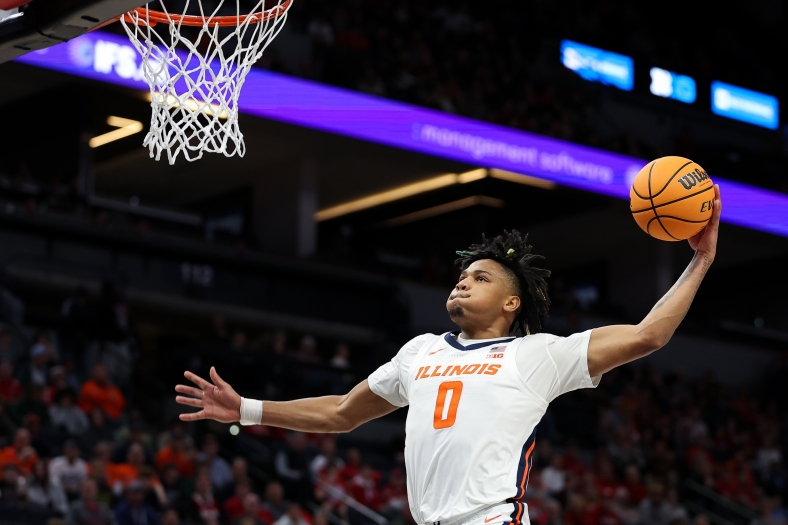
East Regional semifinals — Boston
No. 4 Auburn vs. No. 1 UConn
If Auburn was in the West or Midwest regionals, I’d pick it to get to the Final Four. If any team can knock off UConn before the Elite Eight, I think it’s the Tigers. They match up very well with the Huskies. The problem is that UConn is really good, especially offensively. This will essentially be a home game for UConn, too. With almost a week to prepare, I give the advantage to Dan Hurley.
Winner: UConn
No. 3 Illinois vs. No. 2 Iowa State
Since 2000, Iowa State has won the Big 12 tournament five times and advanced to the Elite Eight just once after doing so. The Cyclones typically get up for the Big 12 tournament, but not the big dance. That’s part of the reason why I like Illinois in this matchup. I also think the Fighting Illini’s offense, which averages 84.4 points per game, poses a lot of problems for Iowa State’s defense.
Winner: Illinois

West Regional semifinals — Los Angeles
No. 4 Alabama vs. No. 1 North Carolina
As always, my biggest concern with Alabama is its defense. The Crimson Tide are one of the worst defensive teams in the tournament — ranking No. 112 in adjusted defensive efficiency and allowing 81.1 points per game. That’s not good enough. North Carolina is one of the top defensive teams in the country and I think it’ll be able to slow down Alabama’s offense.
Winner: North Carolina
No. 3 Baylor vs. No. 2 Arizona
I’ve been burned by Arizona too many times over the years. At this point, I need to see the Wildcats make a deep tournament run before I predict them to do so. I think Baylor poses trouble for Arizona. The Bears are a very good offensive team and won’t be afraid of Arizona’s size. With almost a week to prepare, I’ll give the advantage to the better head coach in Scott Drew.
Winner: Baylor
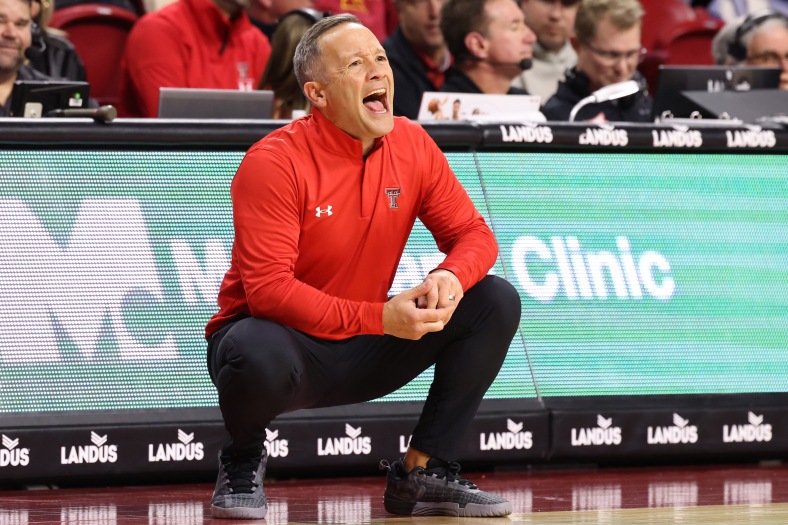
South Regional semifinals — Dallas
No. 5 Wisconsin vs. No. 1 Houston
Wisconsin is a great offensive team, but scoring points on Houston’s defense will be a tall order. The Cougars rank in the top 20 in the country in adjusted defensive efficiency, points allowed per game, 3-point defense, and turnovers forced. Houston will also have a significant talent advantage. A lot of things will have to break the Badgers’ way in order to pull off the upset.
Winner: Houston
No. 7 Florida vs. No. 6 Texas Tech
I think this matchup favors Texas Tech. Florida’s porous defense, which ranks No. 83 in adjusted defensive efficiency and allows 78.5 points per game, will likely prevent it from getting past the Sweet 16. The Red Raiders are solid offensive team and should be able to make shots against the Gators. I also think Grant McCasland is an ascending head coach, which benefits Texas Tech.
Winner: Texas Tech
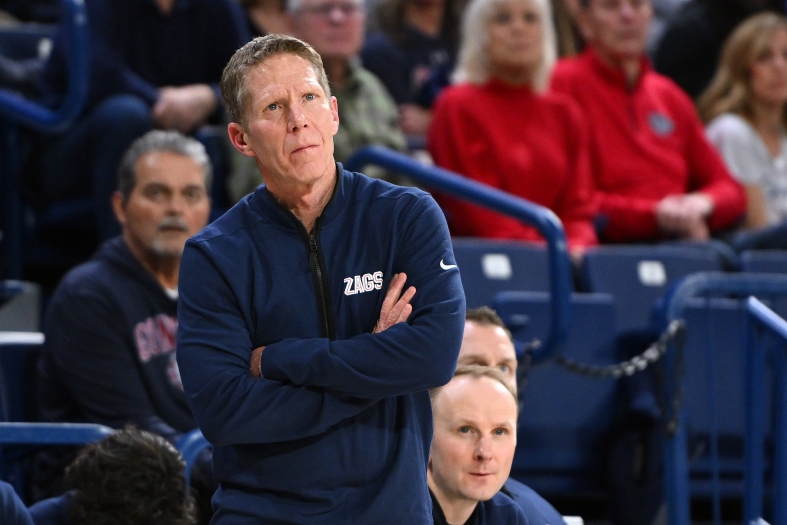
Midwest Regional semifinals — Detroit
No. 5 Gonzaga vs. No. 1 Purdue
This might be the weakest Gonzaga team that we’ve seen in recent years, but I’ll still take the upset. The Bulldogs have the coaching advantage with Few, who’ll have almost a week to prepare for this game. I also don’t trust Matt Painter and Purdue. The Boilermakers have made it to the Elite Eight just once in the previous 14 tournament appearances under Painter.
Winner: Gonzaga
No. 3 Creighton vs. No. 2 Tennessee
Death, taxes, and Rick Barnes not getting past the Sweet 16. I just don’t trust Tennessee to make a deep tournament run, even though it’s an excellent defensive team. Creighton shoots the ball well, takes care of the ball, and should get second-chance opportunities against Tennessee. I think the Bluejays get back to the Elite 8 for a second-consecutive season.
Winner: Creighton
Elite Eight
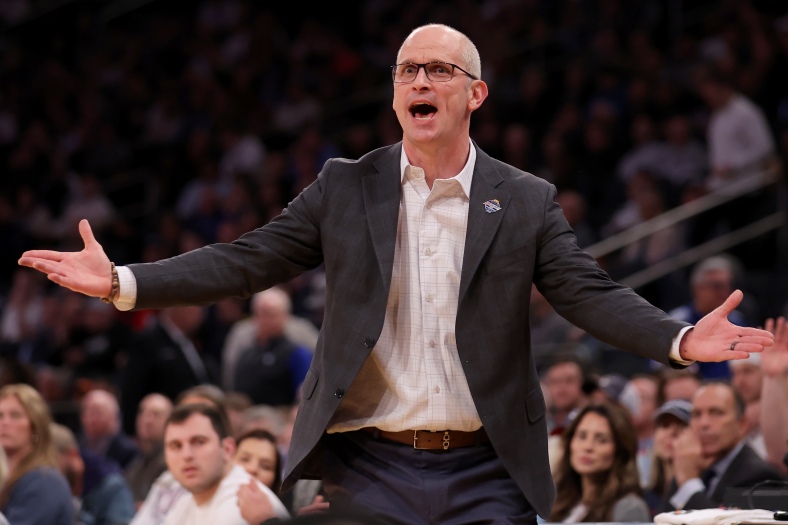
East Regional final — Boston
No. 3 Illinois vs. No. 1 UConn
I think this is a very favorable matchup for UConn. Illinois has struggled on the defensive end of the court — ranking No. 93 in adjusted defensive efficiency and No. 236 in 3-point defense. I doubt that’ll be good enough to knock off the Huskies, who might be the best offensive team in the tournament. The Fighting Illini will have a very difficult time defending UConn.
Winner: UConn

West Regional final — Los Angeles
No. 3 Baylor vs. No. 1 North Carolina
Baylor’s inconsistent defense will likely be its downfall in the tournament. The Bears rank No. 64 in adjusted defensive efficiency and No. 189 in 3-point defense. North Carolina shoots the ball well and is just as aggressive as Baylor on the glass (maybe more so). The Tar Heels are also an elite defensive team. I don’t think they’re getting enough credit from the pundits.
Winner: North Carolina

South Regional final — Dallas
No. 6 Texas Tech vs. No. 1 Houston
These teams played twice in the regular season and Houston won both meetings by a combined 46 points. I expect the Cougars to win a third meeting. I don’t think Texas Tech has the horses to keep up with Houston. The Cougars might be the most athletic team in the tournament. They also have an experienced backcourt, which they didn’t have last year.
Winner: Houston

Midwest Regional final — Detroit
No. 5 Gonzaga vs. No. 3 Creighton
I’m not crazy about any of the higher seeds in this regional, but one of them is likely going to win it. I’m not confident in it, but I’ll pick Creighton. I think the Bluejays have the least amount of baggage and they showed last year they can make a deep tournament run. Gonzaga’s defense, which has been good but not great, will have a difficult time slowing down Creighton’s offense.
Winner: Creighton

Final Four — Glendale, Ariz.
No. 1 North Carolina vs. No. 1 UConn
North Carolina is certainly capable of knocking off UConn. The Tar Heels are good enough defensively to contain the Huskies’ offense — holding opponents to shoot just 40.7% from the field and limiting second-chance opportunities. I’m not sure North Carolina is consistent enough offensively, though. I also think UConn has the more complete team and a better head coach.
Winner: UConn
No. 3 Creighton vs. No. 1 Houston
I expect Creighton’s run to come to an end in this game. The Bluejays will have a difficult time scoring against Houston’s defense, which holds its opponents to shoot just 37.9% from the field. I don’t know where Creighton’s points will come from if it can’t make shots because it’s not a great offensive rebounding team. I like the Cougars to advance to the national championship.
Winner: Houston

National Championship — Glendale, Ariz.
No. 1 Houston vs. No. 1 UConn
These just feel like the most complete teams in the tournament. They’re both athletic, talented, and well coached. My readers know how much I hate picking defending champions, but I think UConn is a wagon. The Huskies have won 21 of their last 22 games and have shown no sign of slowing down. That’s why I think UConn is the most likely team to defend its title since Florida in 2007.
I also think the Huskies can be effective offensively on Houston’s stout defense. UConn had six different players lead the team in scoring in a game in the regular season, including five different players to score at least 20 points in a game. That typically bodes well in the tournament. The Huskies are also aggressive on the boards and play great defense. I think they cut down the nets again.
Winner: UConn









































